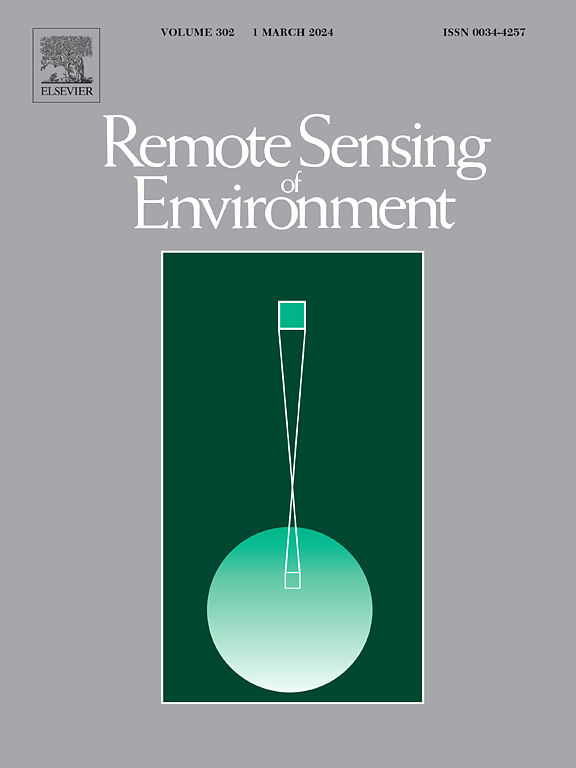区域斜坡变形的时空可解释模型,以青藏高原为例
IF 11.4
1区 地球科学
Q1 ENVIRONMENTAL SCIENCES
引用次数: 0
摘要
InSAR应用的未来无疑将涉及数据驱动的解决方案,以预测跨空间和时间的变形。最近沉降研究的进展已经将这些方法整合在一起,主要是在平坦到近平坦的景观中。然而,在山地地形中,时空InSAR模型迄今主要集中在单个斜坡或小集水区。在这里,我们提出了一种基于深度学习架构的建模协议,该架构能够预测insar衍生的山坡变形。该方法主要是在广阔的山区(~ 15,000 km2)和延长的时间窗口(~ 7年)中使用形态测量学和气象变量开发的。通过在坡度单位尺度上聚合变形信号,同时保持与Sentinel-1采集数据一致的12天时间间隔,我们实现了高建模性能(PCC = 0.7)。如果在其他地区得到验证,该方法可能是迈向大规模、一致和高效的基于场景的山坡变形预警系统的关键一步。本文章由计算机程序翻译,如有差异,请以英文原文为准。
Space-time explainable modelling of regional hillslope deformation, an example from the Tibetan Plateau
The future of InSAR applications will undoubtedly involve data-driven solutions to predict deformation across space and time. Recent advancements in subsidence research have already integrated such approaches, primarily in flat to near-flat landscapes. However, in mountainous terrains, space-time InSAR modelling has so far focused mainly on individual slopes or small catchments. Here, we propose a modelling protocol based on a deep learning architecture capable of predicting InSAR-derived hillslope deformation. This approach is developed primarily using morphometric and meteorological variables over extensive mountainous areas (∼15,000 km2) and extended time windows (∼7 years). By aggregating the deformation signal at the Slope Unit scale while maintaining 12-day temporal intervals consistent with Sentinel-1 acquisitions, we achieve high modelling performance (PCC = 0.7). If validated in other regions, this method could represent a crucial step towards a large-scale, consistent, and highly effective scenario-based warning system for hillslope deformation.
求助全文
通过发布文献求助,成功后即可免费获取论文全文。
去求助
来源期刊

Remote Sensing of Environment
环境科学-成像科学与照相技术
CiteScore
25.10
自引率
8.90%
发文量
455
审稿时长
53 days
期刊介绍:
Remote Sensing of Environment (RSE) serves the Earth observation community by disseminating results on the theory, science, applications, and technology that contribute to advancing the field of remote sensing. With a thoroughly interdisciplinary approach, RSE encompasses terrestrial, oceanic, and atmospheric sensing.
The journal emphasizes biophysical and quantitative approaches to remote sensing at local to global scales, covering a diverse range of applications and techniques.
RSE serves as a vital platform for the exchange of knowledge and advancements in the dynamic field of remote sensing.
 求助内容:
求助内容: 应助结果提醒方式:
应助结果提醒方式:


